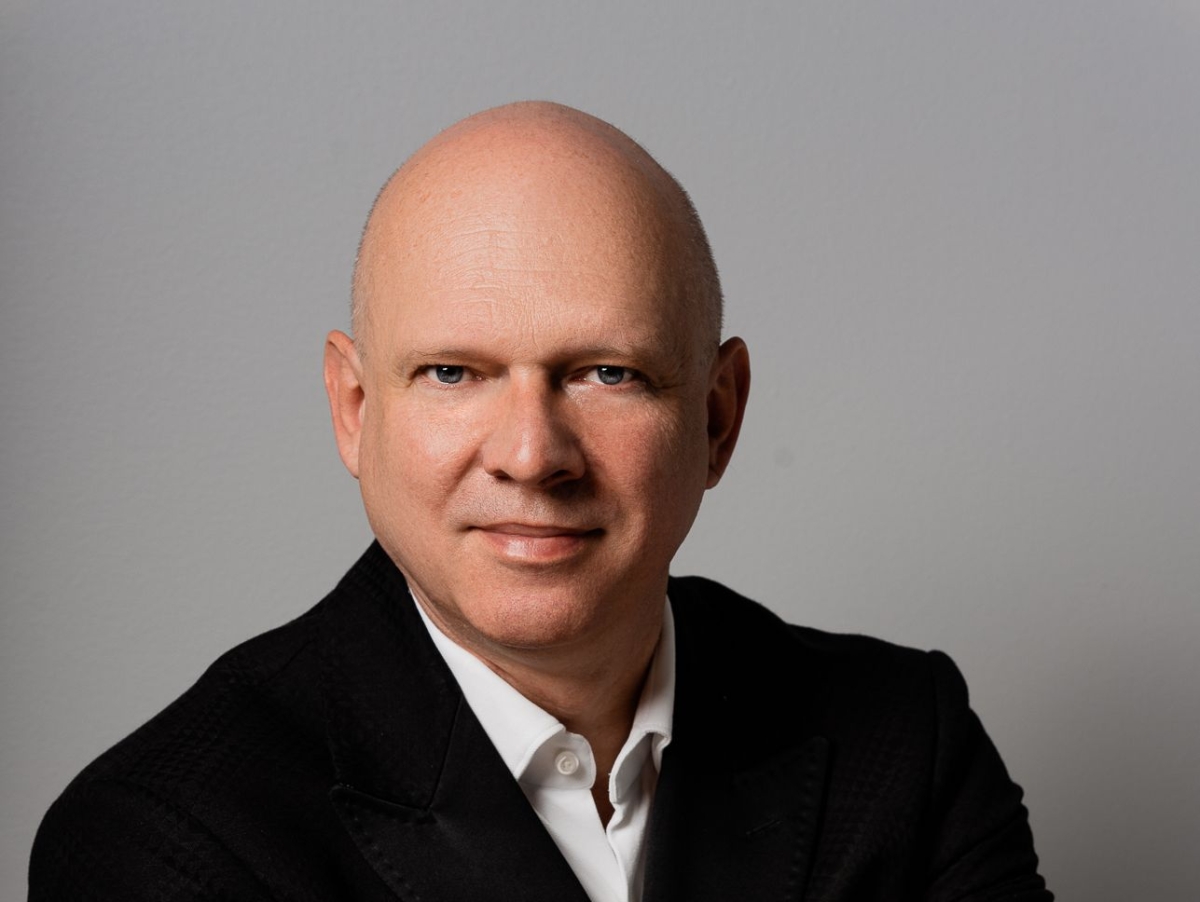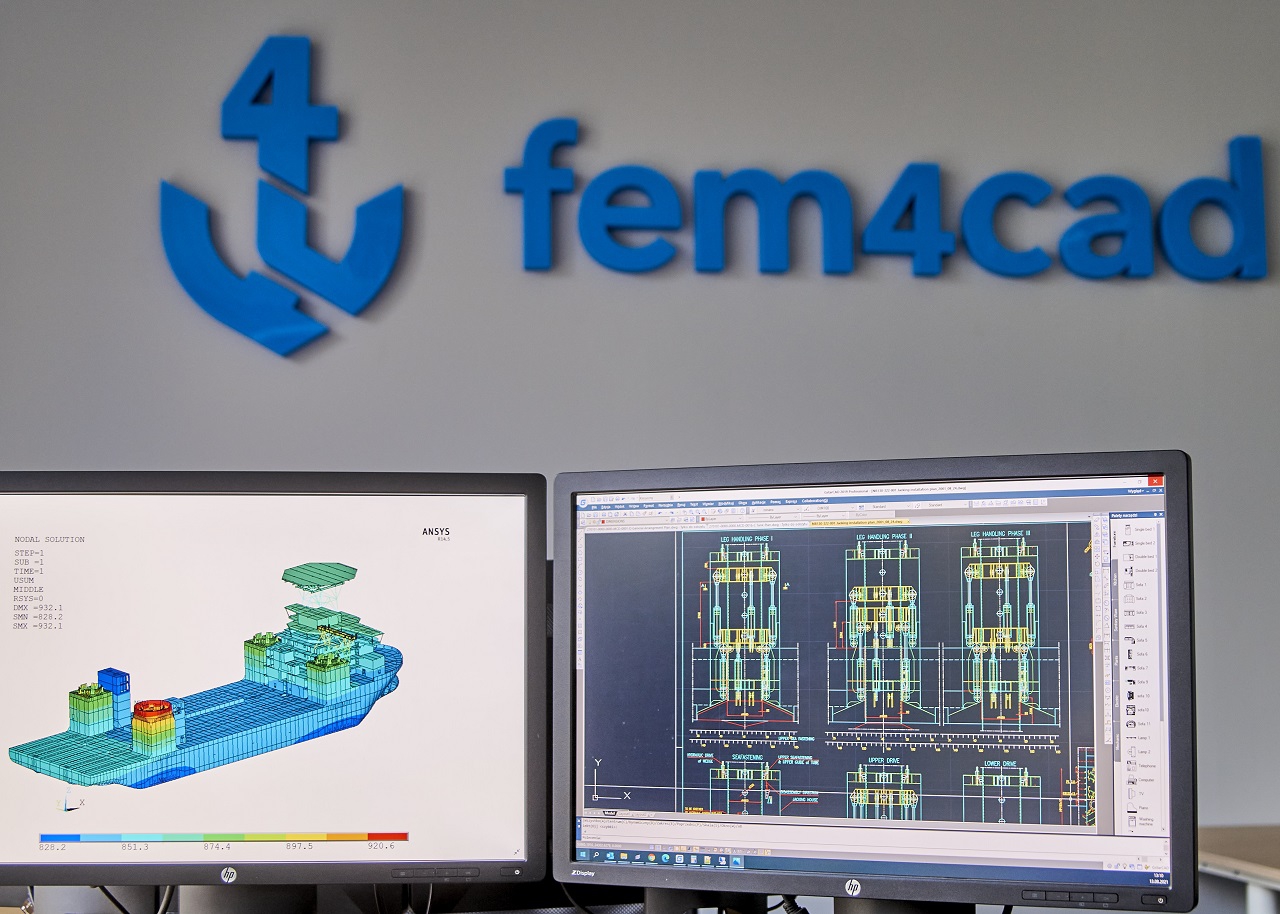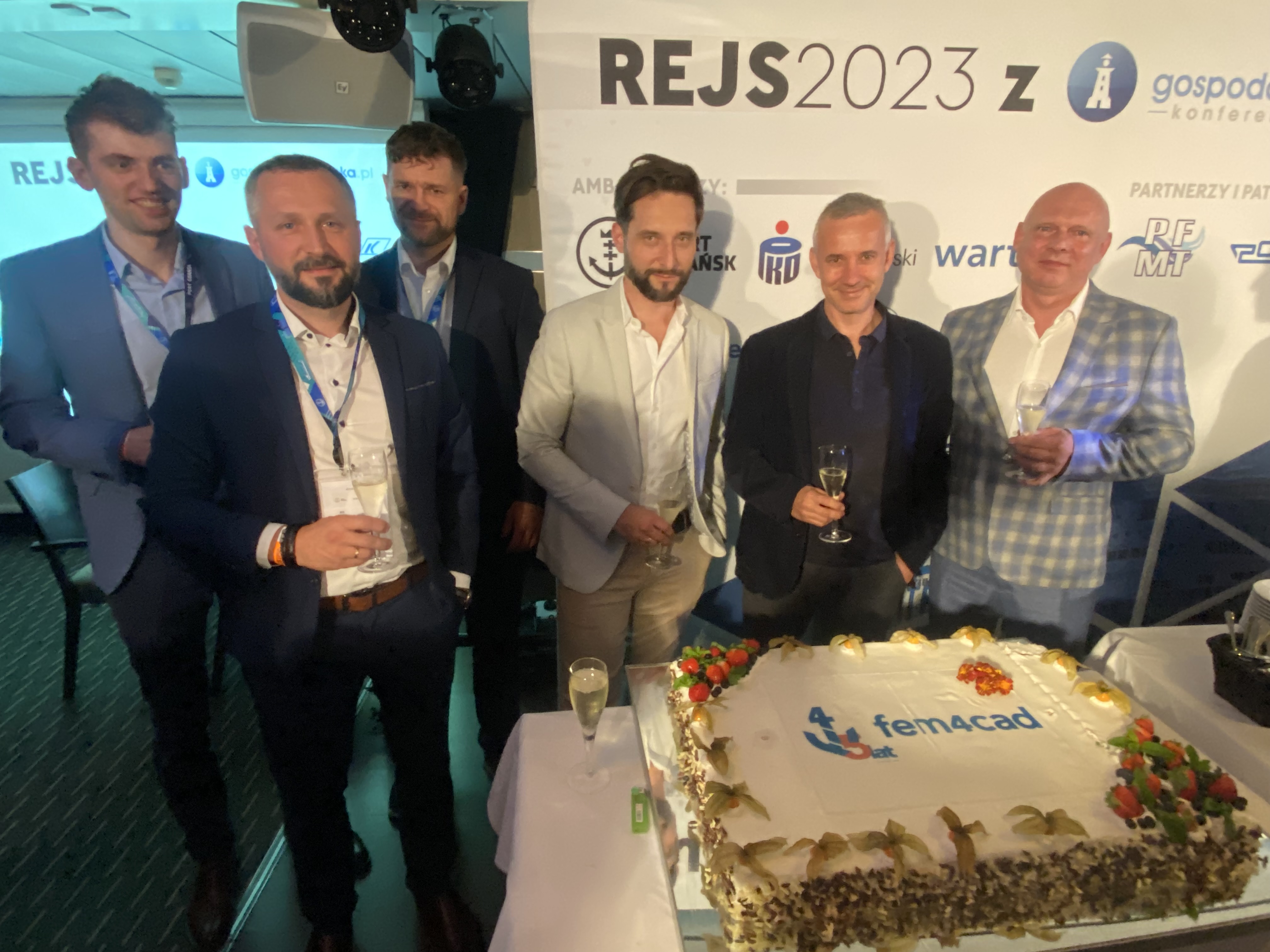
Jan Gortatowski and his company Fem4Cad were practically at the dawn of Polish offshore, when no one saw it as a business. They have watched the industry grow from a front-row seat. And although they have long proven to the doubters that they can be an important element of the supply chain in the construction of, for example, installation ships, in Polish offshore they are still a spectator, not a participant – like the entire shipbuilding sector.
It would seem that the company,
which is involved in design work on the largest and most technically
advanced installation ships at the time, would be one of the first
addresses to which the largest players in the Polish offshore wind
energy industry will direct their steps. After all, they must
organize themselves in such a way that they will be able to implement
several projects at sea within a dozen or so years. However, the
Gdynia-based company Fem4Cad participates in the offshore market, but
not yet in the domestic market. Our domestic shipbuilding industry
has been almost entirely omitted from the offshore market, and
installation ships will come from other countries.
– My colleagues from the time I
worked at the Gdynia Shipyard dreamed of designing and building an
aircraft carrier (laughter). I would like to design and build a
jack-up – says Jan Gortatowski when we talk in the Fem4Cad office.
Beginnings
Fem4Cad,
as Gortatowski himself says, supports design offices in specific
types of calculations and simulations necessary to complete full
construction or reconstruction projects of ships.
– The analyzes we deal with in
the case of offshore vessels are mainly analyzes related to the
durability of these vessels, but there are more problems with such
vessels, so we also deal with other types of simulations. It used to
be that we could say that we performed strength calculations, but
currently there is no good definition of what we do. That's why I
often say that we deal with simulations. Using numerical methods, we
analyze issues that we may have problems with on vessels, starting
from hydrodynamic analyses, through strength and fatigue
calculations, then vibrations and, for example, noise forecasts... –
explains Jan Gortatowski descriptively. – We operate in the broadly
understood marine & offshore industry. The projects we implement
come from virtually every part of this large market – he sums up.
The company itself was established
on the basis of another one, in which Jan Gortatowski was the head of
the Marine & Offshore department. However, the business was taken
over by a larger organization from the automotive industry, so the
unit design department was separated and began to function
independently. In this way, it filled the gap left by the dissolution
of very large design departments in shipyards. Their task was to
support production. However, the private offices created on their
basis had to focus on making money. They could not afford to maintain
teams of several hundred people. Therefore, gaps were created in this
field that could be filled by small but highly specialized teams,
like Fem4Cad. It's no wonder that the vast majority of it's employees
has been working together for 15 years.
– We wanted to support design
offices in the most difficult specialist issues related to broadly
understood calculations – says Jan Gortatowski. That is why
Fem4Cad's direct clients are design offices that subcontract complete
or partial analyzes of projects carried out for their clients to the
company.

Waiting for Polish offshore
Jan
Gortatowski says directly that his company has plenty of work, but
during the conversation we inevitably talk about Polish offshore.
Fem4Cad was one of the few Polish companies that cooperated in the
design (and subsequent redesign) of several high-profile offshore
vessels, so it is no wonder that Gortatowski and his team kept their
fingers crossed for the development of Polish offshore wind energy.
It could bring them important orders and give them the opportunity to
consolidate their position in the supply and development chain.
– We were very much involved in
the creation of the offshore market while working in the previous
company – recalls Jan Gortatowski. He adds that the first ideas for
organizing Polish offshore appeared right after the implementation of
the Vidar installation ship project, on which engineers from Fem4Cad
cooperated with its designer, StoGda, and which was built in the
Crist shipyard in Gdynia.
– A very nice ship was built,
with which the shipowner was very satisfied. Back then, people were
just starting to talk about Polish offshore, but no one wanted to
invest yet – says Gortatowski. He mentions a number of initiatives
that involved, among others large Polish companies. The projects
sometimes dissolved over time, sometimes crashed due to simple
problems, sometimes disappeared from desks along with personnel
changes. – I remember the first meetings of PTMEW (Polish
Offshore Wind Energy Society – red.) It was said that, taking
into account our potential in the offshore industry, we could have
our local content at the level of 70%, maybe even 80% with good
management... Currently, it is said to be 5%...
The potential therefore remains
untapped. As Gortatowski points out, it is not only about his
company, but also about the entire shipyard and design industry.
– As for our company, we
cooperated with StoGda on all projects related to installation ships.
It was Vidar, and on the way also Zourite – although it was not a
vessel for installing wind farms, it was also a jack-up. Then we
participated in the Voltaire project together. This is the largest
ship built by Jan De Nul. In the meantime, we were making upgrades on
existing ships, mainly on Vidar, which is now called Vole au Vent
after a change of shipowner. Practically once a year we had a task
related to changing the field in which we operate or other
reconstruction resulting from current operation. Therefore, it seems
that when it comes to installation vessels, we could freely design
and build them on our market – says the head of Fem4Cad. However,
he points out that no company has been established in Poland that
could manage this type of ship, although there have been several
attempts. – I think that if there was only good will on the part of
potential operators of Polish offshore wind farms, such as PGE, Orlen
or Polenerga, a ship dedicated to the conditions of the Baltic Sea
could be designed and built for a Polish shipowner. Virtually all
countries around the Baltic Sea are interested in offshore wind
farms. I think that such an investment could not fail to pay off.
The lack of orders from Poland does
not mean that Fem4Cad has no orders at all. The topic of installation
ships returns to the desks of employees of the Gdynia office from
time to time.
– New generation ships are
designed a bit more universally, but Vidar-class ships were designed
for the conditions of a specific field. The ship works in a field for
a year or two, then moves to another one. The conditions in which the
vessel operates change, for example the type of ground on which it
will stand. This means that something constantly needs to be
redesigned and changed – explains Jan Gortatowski. – One of such
large reconstructions in Vidar was the relocation of chimneys. In the
first version, the chimneys were placed symmetrically, on the
starboard and port sides. But on the starboard side, on the rear leg,
we had a crane installed. The smoke from the chimney disturbed its
operator. So it was decided to move all exhausts to the port side. It
was a large reconstruction that took place at the Nauta Shipyard in
Gdynia – he says.

Technology is also constantly
changing. The power of wind turbines is increasing, and the
foundations are growing. All this requires increasingly larger ships
with increasingly greater capabilities.
– When Voltaire was built, he was
able to guarantee the installation of all possible types of
foundations existing at that time. The ship has a crane capacity of
3,000 tons and is able to operate at a depth of 80 meters. These
parameters have never been seen before. And now it is already being
said that 3,000 tons may not be enough. The Chinese are talking about
turbines above 20 MW... Shipyards and design offices have to keep up
– notes the head of Fem4Cad.
Offshore is not everything
Although
Fem4Cad has experience and competences in the field of installation
vessels and other jack-ups that could significantly facilitate the
construction of offshore wind farms in the Baltic Sea, its
capabilities do not end there. Therefore, the company does not intend
to wait idly for potential orders from Polish offshore.
– We're not complaining. We
really have a lot of work to do. We would love to take part in the
construction of a Polish jack-up, but we are not sitting idle.
Currently, we have been working on new car carrier projects for
almost three years. This is a reviving market – says Jan
Gortatowski. He recalls that Poland used to be a leader in the design
and construction of this type of ships. Currently, they are about 25
years old, so it is time to replace this fleet. However, they are
currently made in China. – Fortunately, their projects are still
being created in Europe. In the case of car carriers, our direct
client is the Deltamarin design office from Finland – adds
Gortatowski.
Fem4Cad is also active on the oil &
gas market, where the FPSO ship sector has emerged. Over the last few
years, the company has conducted several crash analyses.
– This is a bit unusual in our
industry, we rarely hear about "crashes" in traditional
vessels. However, in the case of FPSO units, this is a fundamental
problem. These vessels are moored and filled with oil or its
derivatives. Service ships or ships receiving or delivering crude oil
dock there all the time. Therefore, there is a great risk that such a
ship will collide with the side of the FPSO – describes
Gortatowski.
In this case, the company performs, among others: "crash" analyzes necessary to design protective structures for equipment elements mounted on FPSOs. All this is done by 8 Fem4Cad employees and, if necessary, 4 collaborators.
– We have been working together
continuously for 15 years. No one from this team left during this
time, except for one person who completely changed the industry.
There were situations when we could have had even more work, but then
we told the client honestly that either we would do it later or,
unfortunately, we would not be able to quickly increase the
processing capacity, for example twice, because we could not do it
responsibly. Our team consists of experienced specialists, the likes
of which are simply few on the market – explains Gortatowski.
During the six years of work under
the Fem4Cad banner, this well-coordinated team had the opportunity to
take part in large, high-profile projects in the maritime industry.
Which of them make Jan Gortatowski most proud? In response, he
mentions the car carrier project carried out a year ago for
Deltamarin. It is a modern vessel, very large, for 9,000 cars.
Fem4Cad performed an almost complete strength analysis for this
project. Currently, the shipyards are working on three such ships in
parallel, and a total of a dozen of them are to be built, which
confirms that this is a good project. The head of Fem4Cad also
recalls the first order that the company completed immediately after
its establishment – the Ro-Pax project for the DFDS shipowner, for
which it also performed a complete strength analysis.
– We don't have much competition
at the moment, at least here, on our market, so the more difficult
the issue, the greater the satisfaction. During the 6 years of the
company's existence, almost every subsequent project was completely
different, it is difficult to find two identical topics, so we do not
have repetitive work, each subsequent topic is a challenge – says
Gortatowski.
At the very end, however, we return
to the installation ship. Considering the full schedule, would
Fem4Cad still be able to involve a Polish jack-up in the project?
– In fact, we currently have a
full workload for about half a year. If I received information today
that such a ship would be built, I could immediately say that the
project would not start before the end of the year. Then we are as
available as possible (laughter). There is no problem – concludes
Jan Gortatowski.


